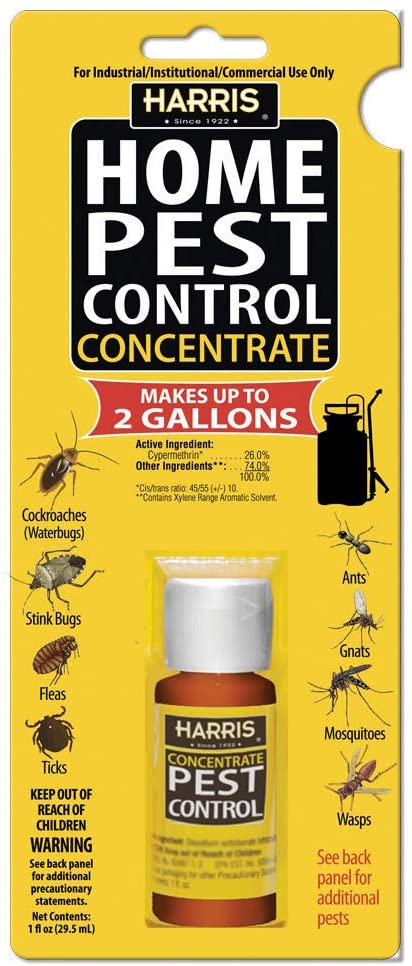Bed Insect Therapy Break Down: Comparing Chemical Vs. Non-Chemical Solutions
In the world of insect control, specifically when taking care of the relentless problem of bed bugs, the selection in between chemical and non-chemical treatment services can be a pivotal one. Both methods use distinctive advantages and downsides, influencing variables such as effectiveness, security factors to consider, and total price. By analyzing the nuanced information of each approach, a clearer understanding of which path to go after in resolving a bed pest infestation can be achieved.
Performance of Chemical Therapies
Chemical treatments for bed bug infestations have been commonly recognized for their potent and fast efficacy in getting rid of these bugs. When taking into consideration the effectiveness of chemical therapies, it is essential to comprehend that they can offer a extensive and quick service to a bed insect trouble.
Additionally, chemical therapies have the advantage of supplying recurring impacts, meaning that they can proceed to remove bed insects also after the preliminary application. This residual action is specifically beneficial in combating any kind of possible re-infestations. Furthermore, the fast activity of chemical treatments can bring relief to individuals dealing with extreme bed pest invasions, allowing them to reclaim control of their living spaces quickly.
Security Concerns With Chemical Solutions
One critical facet that requires cautious consideration when using chemical services for bed insect treatment is ensuring the security of occupants and the atmosphere. Direct exposure to particular chemicals made use of in bed pest treatments can lead to breathing issues, skin inflammation, or various other damaging responses, particularly in people with pre-existing conditions or sensitivities.
Moreover, the environmental impact of chemical remedies is an additional significant consideration. Some pesticides used in bed insect therapies may be unsafe to helpful pests, wildlife, and ecological communities if they seep into the soil or water supply. It is necessary to utilize chemical therapies sensibly, adhering to security guidelines, and taking into consideration much less toxic choices to mitigate these dangers and guarantee the effective and secure monitoring of bed bug problems.
Advantages of Non-Chemical Approaches
Taking into consideration the potential safety concerns and ecological impact linked with chemical options for bed bug treatment, discovering non-chemical methods provides an encouraging choice with several distinctive benefits. Non-chemical therapies are environmentally pleasant, as they do not contribute to air or water pollution, making them a sustainable choice for parasite control.
Additionally, non-chemical solutions can be effective in targeting bed insects, including hard-to-reach locations where chemical therapies might not pass through. Techniques such as warmth therapy, vacuuming, vapor cleansing, and mattress encasements offer detailed elimination without the usage of dangerous chemicals. Additionally, non-chemical strategies can be less turbulent, calling for minimal prep work and enabling quicker reentry into dealt with locations. Generally, opting for non-chemical bed pest treatment approaches not just prioritizes safety and security and environmental management but also guarantees effective and comprehensive pest control.
Limitations of Non-Chemical Treatments

Additionally, non-chemical treatments usually call for numerous applications to attain effective elimination. This can be taxing and may not constantly guarantee full elimination of all bed pests and their eggs, especially in surprise or hard-to-reach areas.
Furthermore, the success of non-chemical treatments heavily relies on appropriate application and thoroughness, which can be testing for individuals without professional proficiency. Poor application of non-chemical techniques might lead to insufficient eradication, bring about relentless infestations and the need for extra treatments.
Therefore, while non-chemical therapies have their advantages, it is necessary to acknowledge these restrictions and consider them when figuring out one of the most efficient technique for managing bed bug problems.
Price Contrast: Chemical Vs. Non-Chemical Options
Given the limitations related to non-chemical treatments, a necessary element to review in the context of bed bug management is the price contrast between chemical and non-chemical alternatives. Chemical therapies normally entail the application of pesticides by specialists, which can vary from $250 to $900 per room, depending on the seriousness of the infestation and the dimension of the area to be dealt with. In comparison, non-chemical treatments like warmth treatment or vapor can be more pricey, with expenses ranging from $1,000 to $6,000 for a whole home. While the first price of chemical therapies may appear reduced, numerous treatments might be called for to completely eradicate the infestation, potentially enhancing the total expense. On the various other hand, non-chemical choices might supply a more green and sustainable remedy, although they can be cost-prohibitive for some individuals. Ultimately, when thinking about the price of bed pest therapy options, it is essential to consider the ahead of time costs what is pest control versus the efficiency and long-term sustainability of the selected technique.
Verdict

Taking into consideration the possible safety and security worries and environmental effect connected with chemical solutions for bed bug treatment, exploring non-chemical approaches provides an encouraging choice with numerous distinct advantages.Offered the constraints associated with non-chemical therapies, an important facet to examine in the context of bed bug monitoring is the expense contrast in between chemical and non-chemical alternatives. In contrast, non-chemical treatments like warm treatment or vapor can be much more pricey, with expenses ranging from $1,000 to $6,000 for a whole home. While the first price of chemical therapies might appear reduced, several therapies might be Discover More required to completely remove the residential pest control infestation, possibly enhancing the general expense.In verdict, when comparing chemical and non-chemical bed insect treatment alternatives, it is vital to think about efficiency, safety and security, benefits, restrictions, and expense.